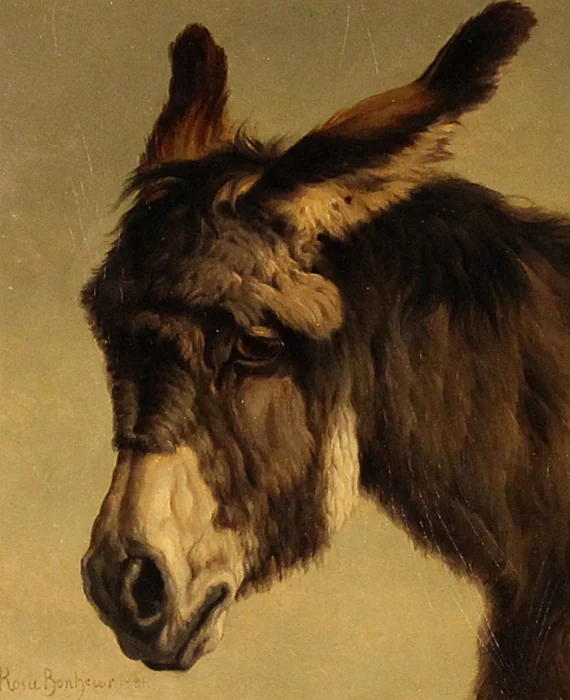Portrait of a Bullock, oil on wood panel, c.1880
Rosa Bonheur
(French, 1822-1899)
Rosa Bonheur (born Marie-Rosalie Bonheur on March 16, 1922) was an artist and sculptor renowned for her realistic paintings of animals and nonconformist lifestyle. Born in Bordeaux to a family of artists, she moved to Paris with her family in 1829 where she began training with her father, Oscar-Raymond Bonheur, an art teacher and landscape artist. The Bonheur family adhered to Saint-Simonianism, a socialist movement that encouraged the education of women. Her mother, a piano teacher who died when Rosa was eleven years old, is credited with helping Rosa as a struggling student by having her draw animals for each letter of the alphabet.
A talent for sketching remarkably accurate renditions of animals was apparent by her early teens, and Bonheur focused her studies on real world observations of cows, sheep, horses, goats, rabbits and other animals in motion, on farms, in pastures and at fairs. Described as unconventional in her personal life, Bonheur was nonetheless a traditionalist in her artwork, studying her subjects carefully and creating many sketches before taking paint to canvas. At fourteen, she began visiting the Louvre, where she further honed her skills by copying paintings by her favorite artists, Poussin and Rubens.
At the Paris Salon of 1841, Bonheur exhibited two paintings, Goats and Sheep and Rabbits Nibbling Carrots. Her reputation grew between 1841 and 1853 as she regularly exhibited animal paintings and sculptures. Bonheur won third prize at the Salon in 1845, and a gold medal in 1848. Her status was firmly established at the 1849 Salon with the painting Plowing in Nivernais, which had been commissioned by the French government. Toward the end of her career, Bonheur’s palette became lighter, her animals more defined, and her finish highly polished and perfected.
Through her success, Bonheur helped pave the way for women artists. An open lesbian in a time where gender expression was frowned upon, Bonheur relished in the freedom and power she felt by being her own boss and paving her way in the world. Notably, she spent a year and a half sketching for The Horse Fair (1855) near the Boulevard de l’Hôpital dressed as a man to discourage attention. The Horse Fair was monumental in scale, at eight feet high by sixteen feet wide, becoming Bonheur’s best-known painting. This led to accolades, international recognition and a meeting with Queen Victoria. In 1865, French empress Eugénie de Montijo visited Bonheur at her Fontainebleau studio to award her the Legion of Honor.






